Introduction
Stir-fried mustard greens, a staple in many Asian cuisines, offer a harmonious blend of earthy bitterness and vibrant umami when prepared correctly. This dish, rooted in simplicity yet elevated by technique, transforms a humble leafy green into a culinary masterpiece. Whether you’re a novice cook or a seasoned home chef, mastering the nuances of stir-frying mustard greens can elevate your meals and impress even the most discerning palates. In this guide, we’ll explore the history of this dish, its cultural significance, and the step-by-step methods to achieve perfection. From selecting the freshest greens to balancing flavors with precision, we’ll delve into every detail to ensure your stir-fried mustard greens are nothing short of extraordinary.
The Humble Origins of Mustard Greens
Mustard greens (Brassica juncea) have been cultivated for thousands of years, with origins tracing back to the Himalayan regions of India and China. Revered for their resilience in harsh climates and nutritional density, these greens became a dietary cornerstone in rural communities. Over centuries, stir-frying emerged as the preferred cooking method—a technique that preserves texture, enhances flavor, and requires minimal resources. Today, stir-fried mustard greens grace tables from Singaporean hawker centers to upscale Manhattan restaurants, bridging cultural divides through shared culinary heritage.
Selecting the Perfect Greens
The foundation of exceptional stir-fried mustard greens begins at the market. Look for vibrant, deep-green leaves with firm stems. Avoid wilted or yellowing foliage, as these indicate age or improper storage. Organic varieties may offer a more pronounced peppery kick, while conventionally grown greens often have a milder bite. For optimal texture, choose bunches with medium-thick stems—too thin, and they’ll overcook; too thick, and they’ll remain fibrous.
Preparation: The Key to Crisp Perfection
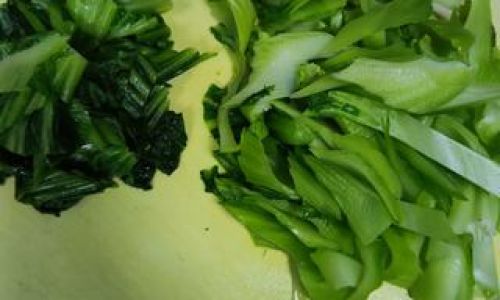
-
Cleaning Rituals
Mustard greens often harbor grit between their leaves. Submerge them in cold water, swish vigorously, and repeat until the water runs clear. For stubborn debris, add a tablespoon of vinegar to the soak—a trick inherited from generations of home cooks. -
Cutting Technique
Separate leaves from stems using a sharp knife or your hands. Slice stems diagonally into ½-inch pieces to ensure even cooking. Stack leaves, roll them into cigars, and slice crosswise into 1-inch ribbons. This method, known as chiffonade, maximizes surface area for wok contact. -
Blanching: Secret to Bitterness Control
Many recipes skip this step, but blanching is non-negotiable for refined flavor. Bring a pot of salted water to a rolling boil, add the stems, and cook for 90 seconds. Add leaves and boil for 30 seconds more. Immediately transfer to an ice bath to halt cooking. This process mellows bitterness while preserving chlorophyll for vivid color.
The Science of Stir-Frying
Stir-frying is a high-heat, quick-cooking method that demands precision. A carbon-steel wok, prized for its heat retention and agility, is ideal. However, a large cast-iron skillet can suffice. Preheat your vessel over medium-high heat until droplets of water evaporate instantly—a test known as the water dance. Add oil (peanut or grapeseed for high smoke points) and swirl to coat the surface.
Flavor Layering: Aromatics and Alchemy
-
Aromatic Base
Begin with minced garlic (3 cloves) and ginger (1-inch piece). Sauté until fragrant but not browned—30 seconds max. Overcooking introduces bitterness.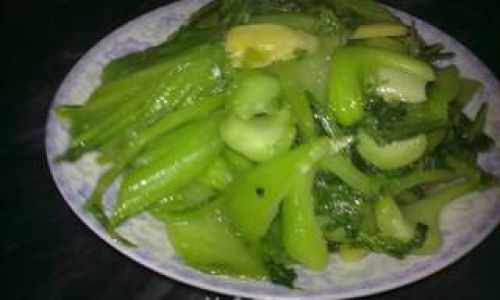
-
Chili Fire
Add sliced fresh red chilies (1-2, depending on heat preference) or dried red pepper flakes. This step imparts a gentle warmth without overwhelming the greens’ natural flavors. -
Protein Boost (Optional)
For a heartier dish, introduce diced tofu, shrimp, or ground pork. Sear until golden, ensuring flavors meld with the aromatics.
Cooking the Greens: Timing Is Everything
-
Stems First
Add blanched stems to the wok first, as they require slightly longer cooking. Stir-fry for 2 minutes, tossing continuously to prevent burning. -
Leaves Join the Party
Toss in the leaves and a splash of cooking liquid (stock or water). Cover briefly to steam-wilt, then uncover and stir-fry until leaves are tender yet retain a slight crunch—approximately 3-4 minutes.
Seasoning Mastery
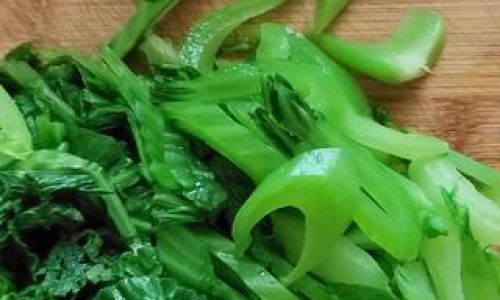
-
Soy Sauce Symphony
Drizzle light soy sauce (1 tablespoon) along the wok’s edge—this technique, called wok hei, caramelizes the sauce for smoky depth. -
Oyster Sauce Elegance
A teaspoon of oyster sauce adds richness without heaviness. Vegetarians can substitute with mushroom-based alternatives. -
Sesame Oil Finale
A drizzle of toasted sesame oil at the end imparts nutty aroma. Use sparingly—its potency demands respect.
Textural Contrasts: The Finish Touch
For gourmet flair, incorporate crispy elements:
- Fried shallots or garlic chips
- Toasted sesame seeds
- Crushed peanuts
These additions provide crunch, balancing the greens’ softness.
Troubleshooting Common Pitfalls
- Soggy Greens: Overcrowding the wok traps steam, leading to mushiness. Cook in batches if necessary.
- Bitter Aftertaste: Under-blanching or overcooking exacerbates bitterness. Stick to precise blanching times.
- Uneven Cooking: Inconsistent heat distribution? Invest in a wok ring to stabilize your pan over the burner.
Regional Variations: A World of Flavors
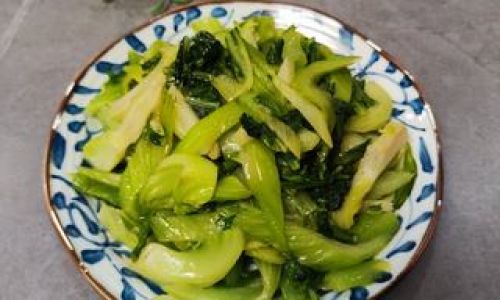
- Sichuan-Style: Add doubanjiang (fermented broad bean paste) and Sichuan peppercorns for numbing heat.
- Korean Inspired: Finish with gochujang and a sprinkle of seaweed flakes.
- Southern U.S. Twist: Toss with bacon drippings and a splash of vinegar for a soulful side.
Nutritional Powerhouse Unveiled
Mustard greens are nutritional marvels, packed with vitamins A, C, and K, along with calcium and antioxidants. Stir-frying preserves more nutrients than boiling, making this dish a guilt-free indulgence.
Serving Suggestions
Pair with steamed jasmine rice, grilled meats, or noodles. For a complete meal, nestle a fried egg atop the greens—the runny yolk becomes a luxurious sauce.
Leftovers Reimagined
Transform day-old stir-fried greens into:
- Fritters: Mix with chickpea flour and pan-fry.
- Soup Base: Blend with broth for a vibrant green soup.
- Dumpling Filling: Combine with minced pork and ginger.
Conclusion
Stir-fried mustard greens transcend mere sustenance—they’re a canvas for culinary creativity. By mastering blanching, heat control, and flavor balancing, you unlock a dish that’s both humble and regal. Whether you adhere to tradition or experiment with global twists, this recipe invites you to savor the alchemy of fire, leaf, and seasoning. So grab your wok, embrace the sizzle, and let the dance of flavors begin. Your journey to mustard green mastery starts now.
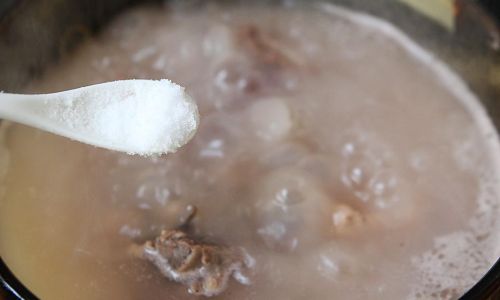
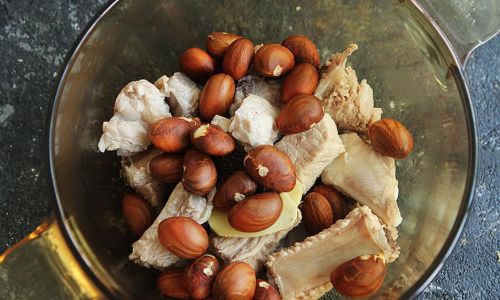



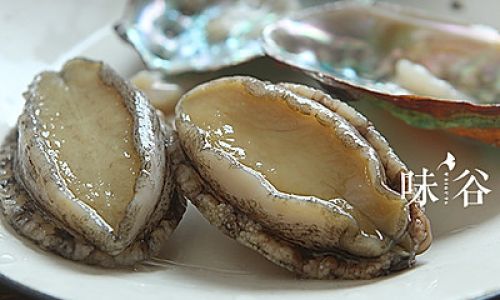
0 comments